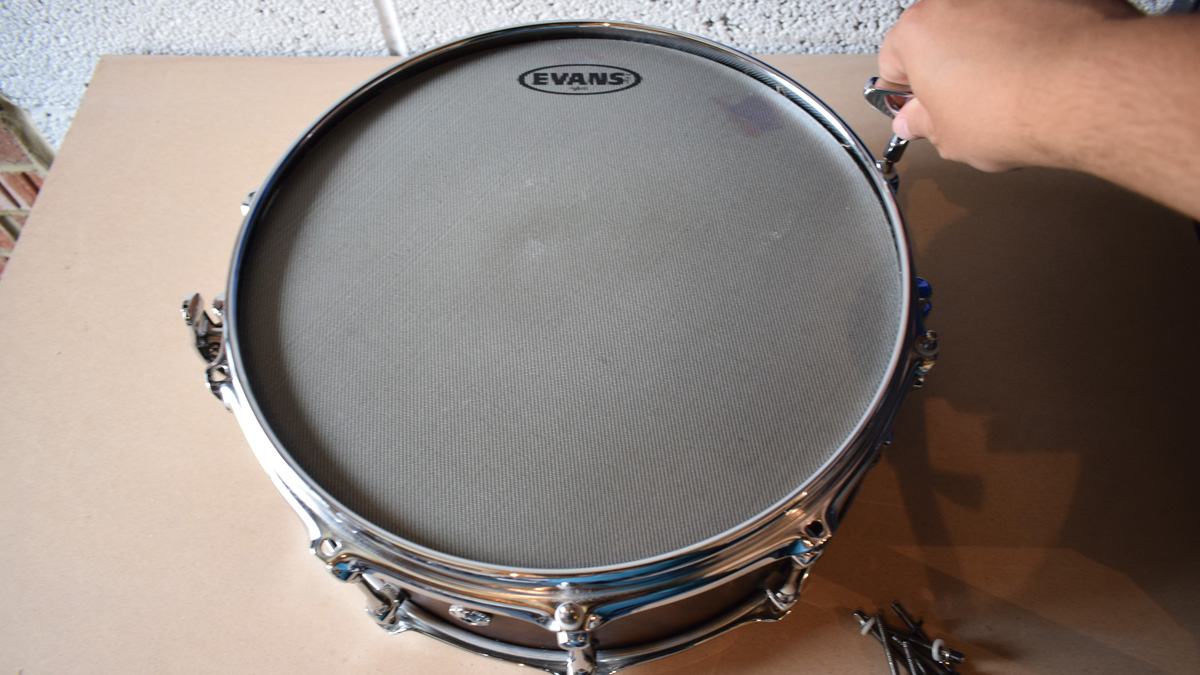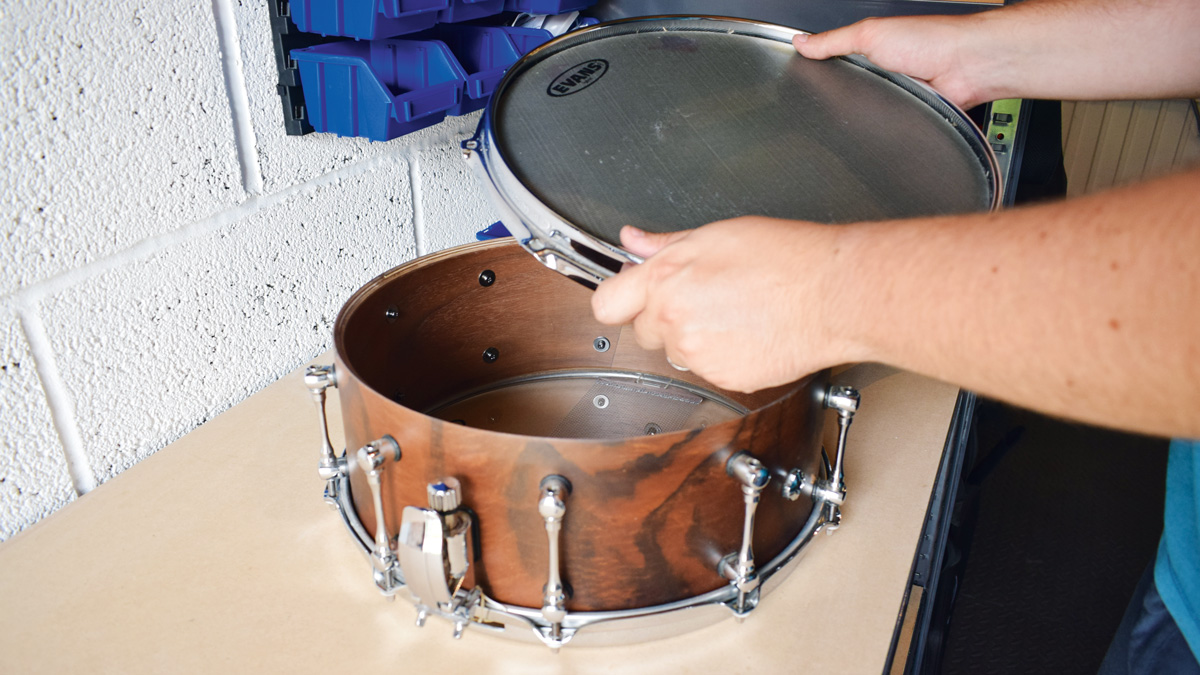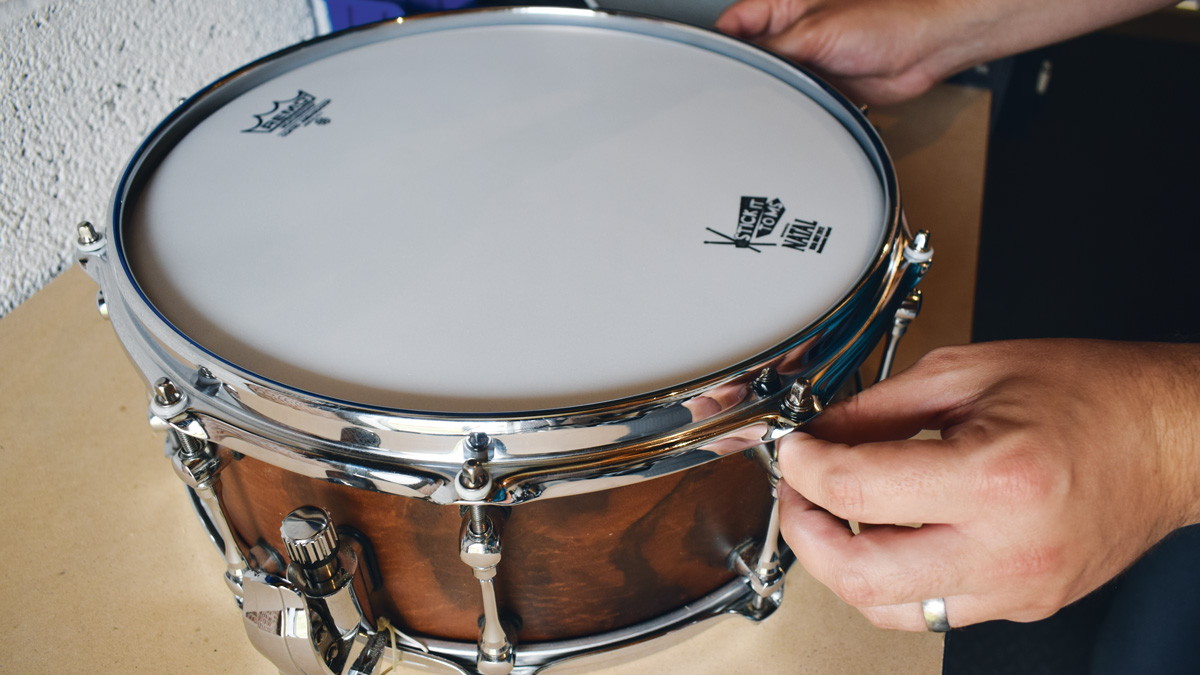The Workshop: How to change your drum head
In ten easy steps!
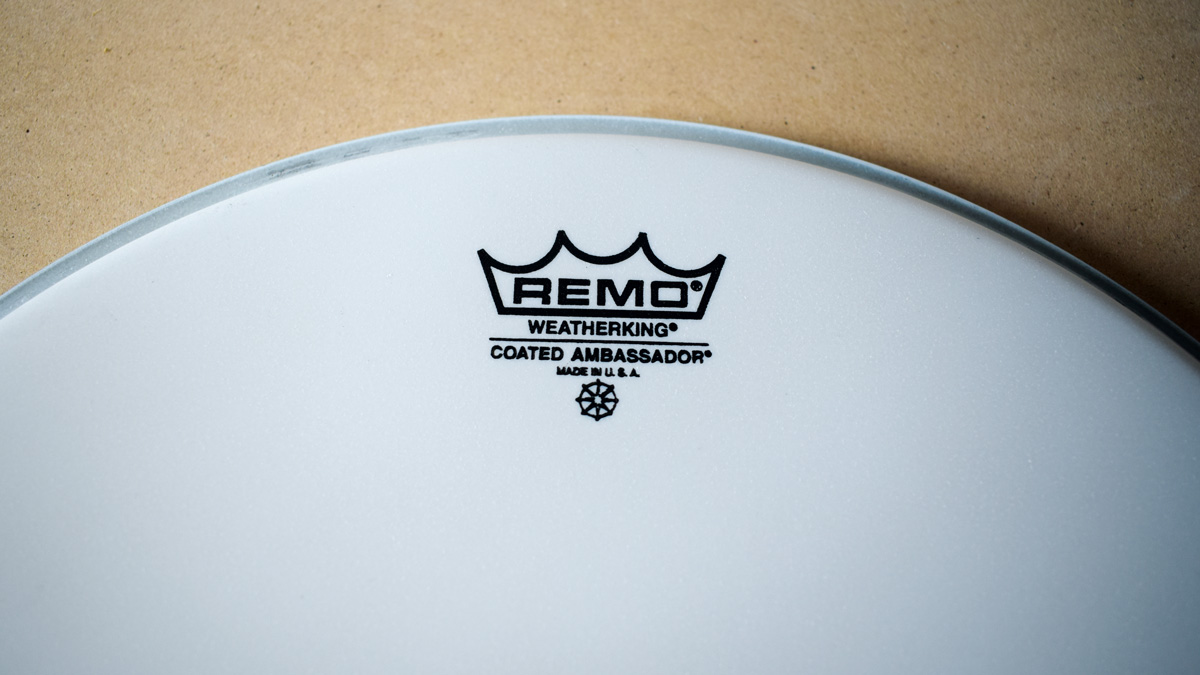
1. Choose the right drum head
In order to bring the best sound out of our drums, it is important not only to keep them in tune, but also replace the heads from time to time.
Even good quality heads will eventually become tired and begin to sound dull. The batter head will tend to be replaced more regularly as, obviously, that’s the one you hit, but it is still important to change the resonant head from time to time in order to keep things sounding fresh.
To show you how to do this, we’ve changed a snare batter in our workshop. Follow our simple steps, below, and new heads will be a cinch.
Your choice of drumhead will have an enormous impact on the sound of your drums. Try experimenting between clear and coated heads or single-ply versus double-ply. Base your decisions on your stylistic needs and ultimately, your overall sound preference. Here I have a single-ply coated ambassador.
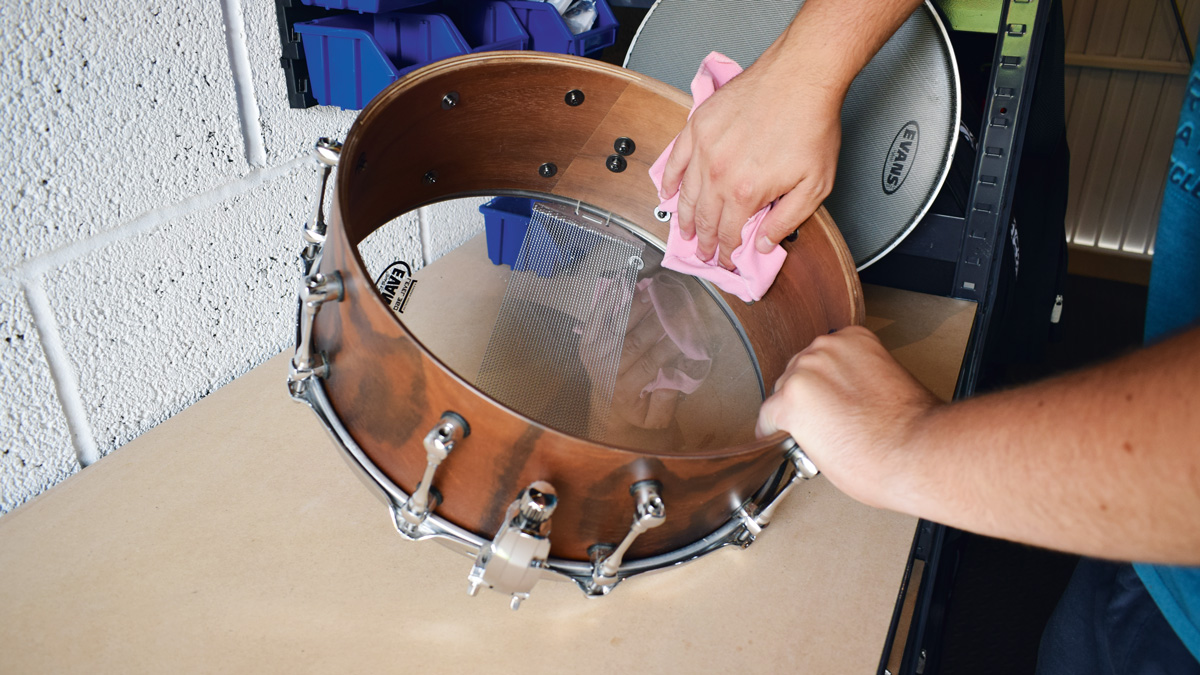
4. Ensure everything is clean
If any debris has managed to find its way into the drum, now is your chance to remove it and give it all a good sprucing.
We like to use a microfibre cloth to give a quick once-over around the inside of the drum shell and bottom head. Give the hoops a good rub-down too, getting rid of any fluff, dust and stick debris.
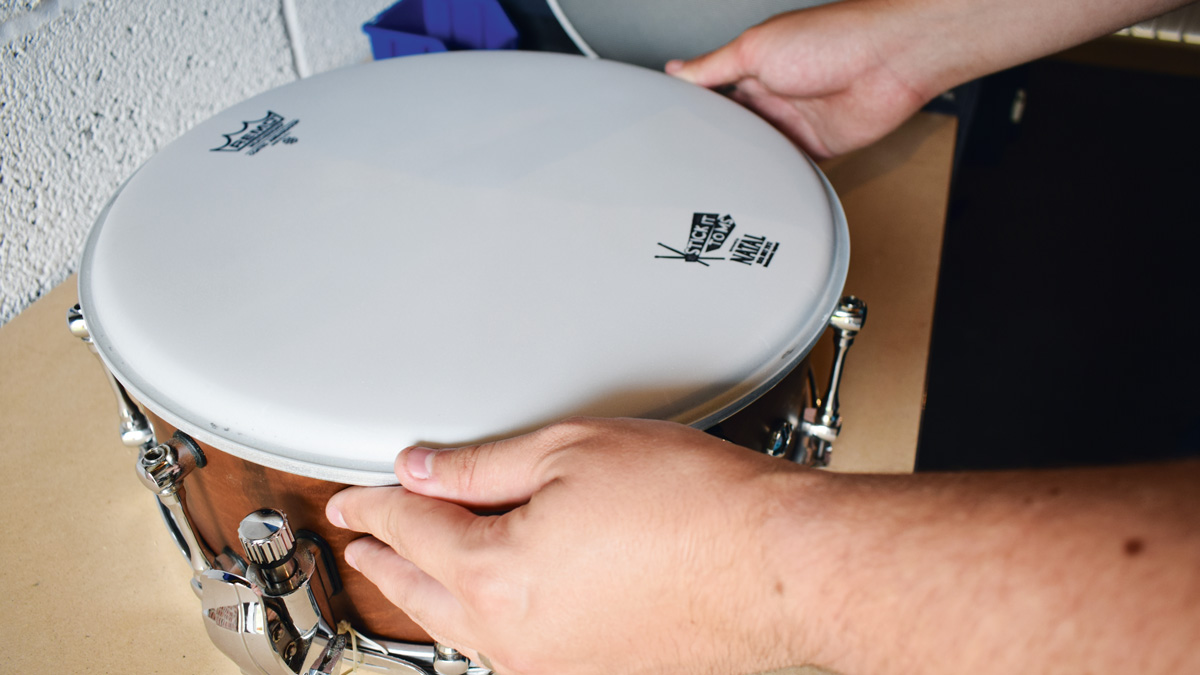
6. Position the new head
Some people like to run around the bearing edge with some kind of lubricant – often candle wax.
This allows the drum head to move a little more freely over the bearing edge. If you’re at all like me, you’ll want to ensure that the logo is facing the right way in relation to the respective snare throw-off or tom mount.
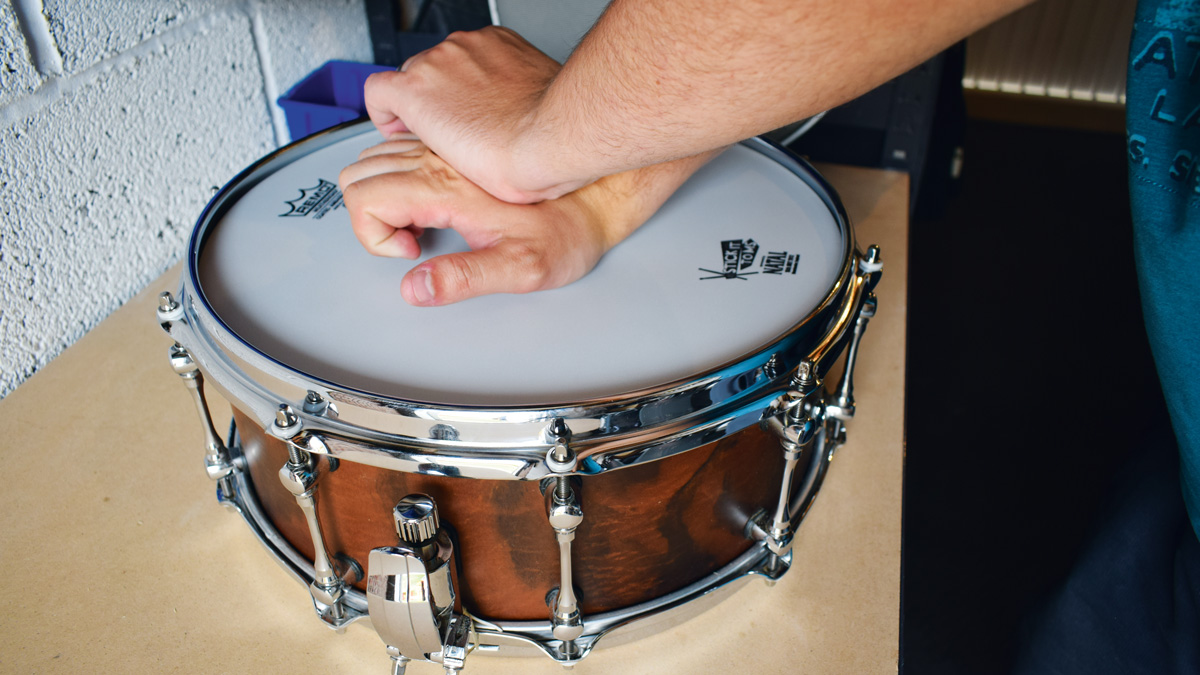
7. Seat the head
After replacing the hoop and tension rods, the tradition is to ‘seat’ the head by evenly cranking it up to a very high tension in order to stretch it in.
If you hear cracking as you tighten, don’t worry, it’s just the glue in the drum head and this is perfectly normal.
You can then push down on the head to stretch and crack the glue further. Some people like to leave it for a few hours or even overnight.
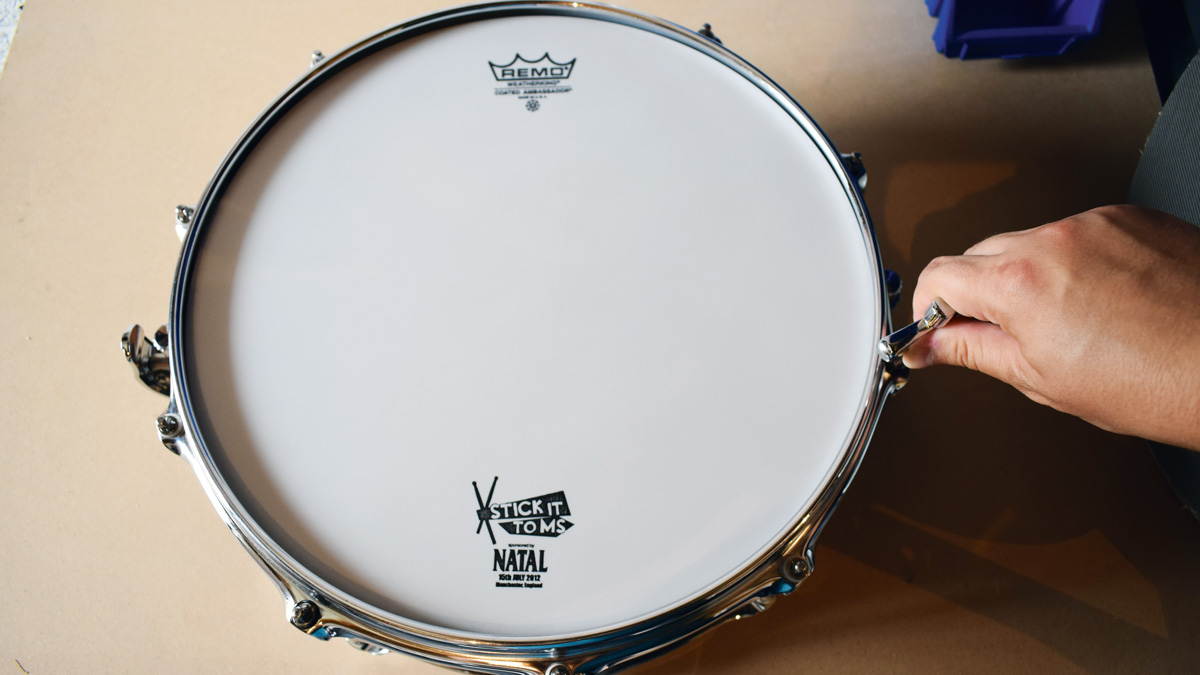
9. Initial tuning
Tighten each rod by a small amount, gradually increasing the tension of the head.
You could start at a quarter or half-turn at a time, depending on how high you want to tune the drum. Most people favour the use of opposite tuning, although we personally prefer to move around in a clockwise direction, making small adjustments.
10. Fine tuning
Rest the drum on something soft to mute the reso, this way you’ll only hear the pitch of the batter head.
A towel or hoodie will work well if you don’t have a fluffy drum case like ours. Using a stick or mallet, play the head an inch or so away from each tension point, finely tuning each one up to the same pitch as the highest note.
Tom is a professional drummer with a long history of performing live anywhere from local venues to 200,000 capacity festivals. Tom is a private drum tutor, in addition to teaching at the BIMM Institute in Birmingham. He is also a regular feature writer and reviewer for MusicRadar, with a particular passion for all things electronic and hybrid drumming.
